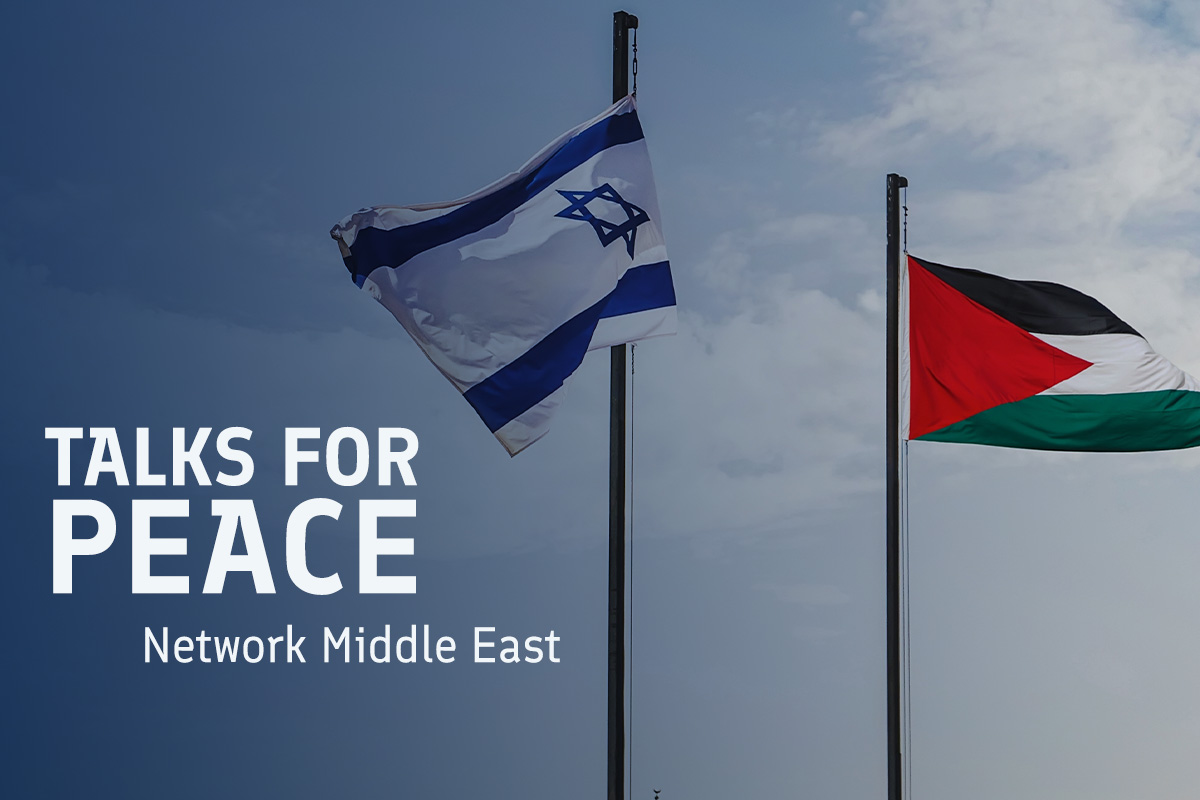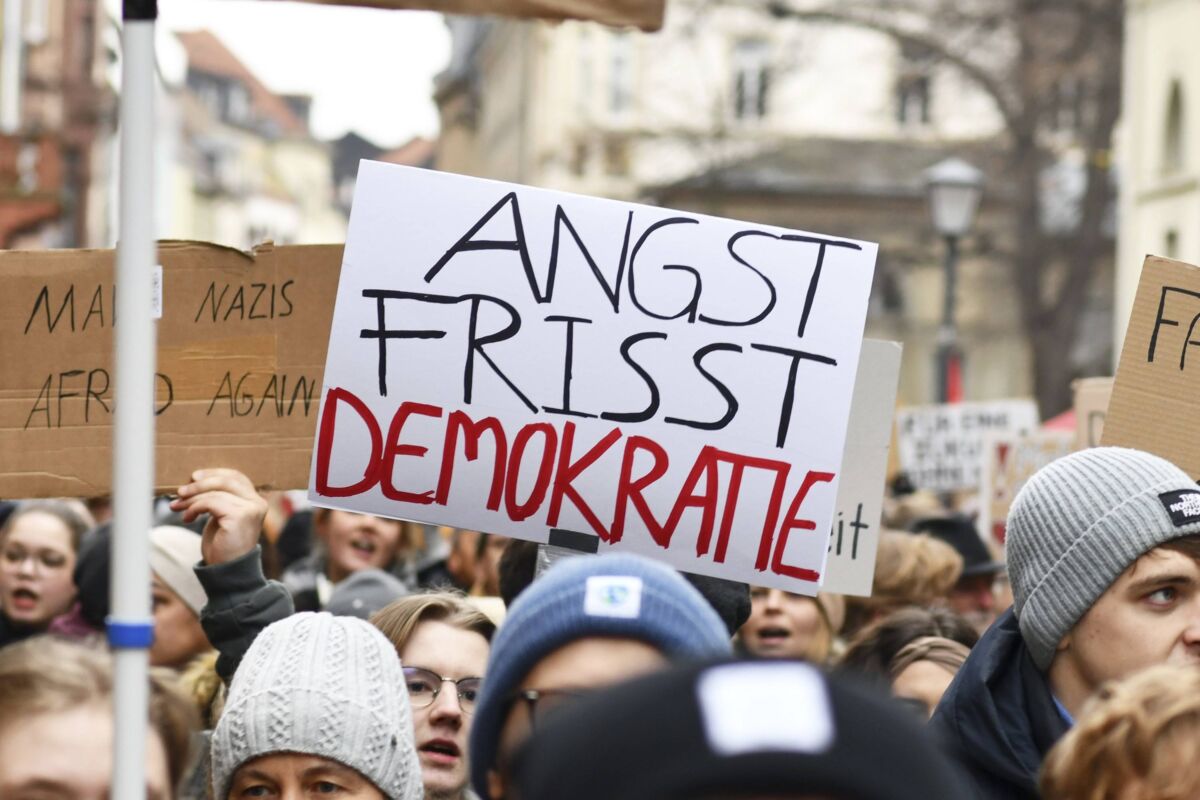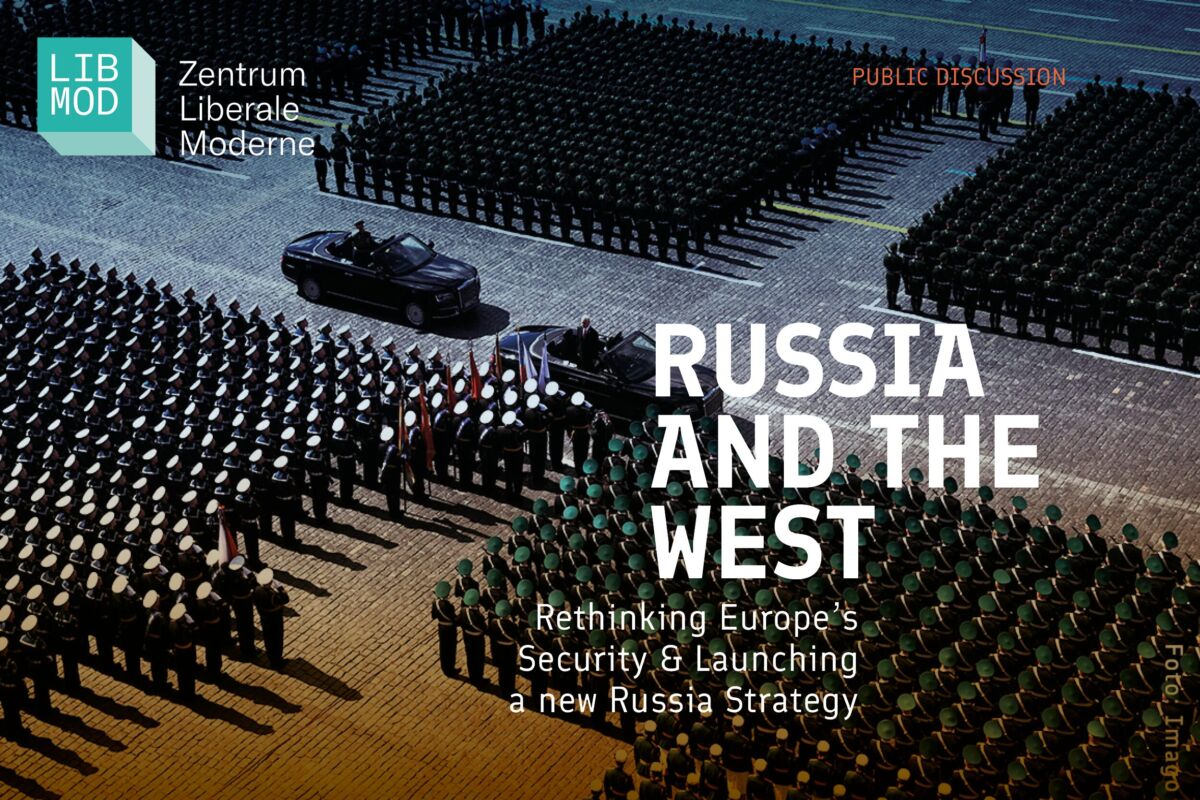Can the situation in the Middle East still be deescalated, Ali Vaez?

The situation in the Middle East is at the brink of escalation. While observers are waiting for Iran and its proxies to start their announced attack on Israel, diplomatic crisis intervention is running at full speed in order to prevent a full-blown regional conflagration. In his interview with Till Schmidt, Ali Vaez analyzes the current situation.
Ali Vaez is Iran Project Director at the International Crisis Group. In the past, he was advisor for the 2015 negotiations over a nuclear deal with Iran and has served as Senior Political Affairs Officer in the UN. Vaez is a professor at Georgetown University and Fellow at the Johns Hopkins School of Advanced International Studies.
During the past days, the pace towards escalation between Israel and Iran has been speeding up dramatically: We witnessed the Houthi drone attack on Israel’s soil followed by the killing of Hezbollah’s senior member Fuad Shukr in Beirut, and the targeted killing of the Hamas’ leader Ismail Haniyeh in Teheran. Later, Israel announced the assassination of Hamas’ senior commander Mohammed Deif and Yahya Sinwar became Haniyeh’s successor. As we speak on the afternoon of Monday 12th, how do you characterize the current situation in the whole region, Ali Vaez?
The region has never been closer to the verge of an all-out regional conflagration. Since the beginning of the war in Gaza there was always the fear that it would expand and spill over. But that was avoided for mainly two reasons: One was the reluctance of all parties to escalate horizontally. The second was a degree of behind-the-scenes diplomacy aimed at trying to contain the tensions. A good example of that is how the US tried to manage the exchange of fire between Iran and Israel in April. On the one hand, it made sure that the degree of potential damage and casualties as part of Iran’s retaliation for Israel’s attack on its diplomatic facility would be minimized. At the same time, it held Israel back from further escalating the cycle of violence. All these mechanisms and elements are now at their breaking point.
How do you explain that?
The US ability to influence Israeli decision making has become much more limited because President Biden has only little capability of acting right now. Prime Minister Netanyahu has become less risk averse. Furthermore, Iran and Hezbollah believe that they are at a stage where, unless they take control of the escalation ladder, Israel is going to continue to push the envelope at their expense.
Where do you see possibilities, strategies and leverage for regional deescalation?
Regional deescalation would require to extinguish the source of the current tensions which is the war in Gaza. The US is the only actor which could enforce such a solution. But it would require to use some of its points of leverage that so far they have proven reluctant to deploy: limiting offensive military aid to Israel or conditioning it on Israel agreeing to an immediate ceasefire deal and pushing for a binding UN Security Council resolution to the same purpose.
To what extent does Biden’s withdrawal and Kamala Harris’ candidacy for presidential elections change the picture?
President Biden—both because of his own personal commitment to Israel but also because of political calculations especially in the run-up to the elections—has been loath to put pressure on Israel as a key US ally. I am sure that the White House is now concerned that any policy that Biden would pursue could also backfire on Harris and her chances of victory in November. But the reality is that there is also a political price domestically and within the Democratic Party associated with inaction or failure to get a ceasefire.
Netanyahu seems to have calculated that with Biden no longer running for reelection, Harris would pursue her own agenda. That means that the US would even be more paralyzed than before to act and put pressure on Israel. But the current administration could have turned this argument on its head and actually put pressure on Israel through President Biden, who has very little to lose now. Vice President Harris could actually take a distance from that policy, emphasizing that she is not the ultimate decision maker. In comparison, it does appear that Harris has more empathy for the plight of the Palestinians and is more critical of Israel’s negligence of the rules of war and international humanitarian law. But when it comes to using US leverage, we’re talking about a few degrees of difference. Washington is going to remain on tiptoes when it’s dealing with Israel.
In April, the Iranian attack on Israel has been restrained also through effective regional collaboration. In the current situation, where do you see other states of the region using their leverage to deescalate?
All these regional countries urging Iran to demonstrate restraint in April are doing the same thing now. Some facilitated indirect discussions between Iran and the United States, like Oman and Qatar. I think those efforts are continuing. At the end of the day, the problem is that none of these countries have sufficient leverage to be able to change the dynamics which have become intolerable for Iran now. Iran is very much afraid of losing the credibility of its own deterrence mechanism when Israel is going to continue with the operations it has carried out recently.
Iran has put that deterrence in place in the form of having partners and proxies away from its own border to deter a direct attack on its soil. Yet none of the countries in the region can do anything that would restore the deterrence between Iran and Israel that has existed until October 7th. The other countries of the region can try to get themselves out of the line of fire or, at best, they can try to shoot down Iranian drones and missiles. But beyond that, there is not much that they could do.
How do you contextualize the current dynamics within the past and possible future confrontations between Iran and Israel?
The Islamic Republic’s animosity toward Israel doesn’t have much strategic justification. Rather, it has been used for ideological reasons as a rallying call inside the country. As a result of its own weakness in conventional military capabilities, Iran has also realized that it does require to engage in asymmetric means of defence through partners and proxies in the region. That purpose requires an ideological glue that the Iranians found in the “Palestinian cause”, which allows the Iranians to transcend inherent limitations that the country has as a Persian nation among the Arabs and Turks and as a Shia nation among Sunnis.
From the Israeli perspective, Iran is the only country in the region that can limit Israel’s room for maneuvering. No other country in the region dares to strike Israel or even support groups that are seeking Israel’s destruction with arms and training. That’s why it is understandable that from the Israeli perspective weakening and undermining the Iranian regime is a major priority. Over the past few decades, both sides have maintained the strategic rivalry within a framework that was manageable for both sides. But now it is quickly arriving at a stage where it would be very difficult for either party to make sure that these tensions do not spin out of control.
Above the current dynamics of further escalation is the question whether Iran decides to take the final step towards building a nuclear weapon. How do you characterize the current status quo in the nuclear dispute?
Iran’s nuclear program is closer than ever to the verge of weaponization. It is now able to break out towards enriching enough uranium for a single weapon in less than a week and without the immediate detection by the UN watchdog IAEA. Iran can have enough nuclear material for an arsenal of nuclear weapons in the course of a month. Weaponization can happen in secret facilities throughout the country, leaving the West and Israel in particular with no good options to stop the process at that point. So the risk is real in terms of the facts on the ground. We are just one political decision away from Iran deciding to cross the Rubicon and developing nuclear weapons.
Within that decision, what are the main factors that count?
One factor is Iran’s threat perception. The more Israel succeeds in weakening Iran’s regional deterrence, the more it fails because it pushes Iran towards its ultimate deterrent in the form of nuclear weapons. A second factor in the Iranian calculus is the prospect of being able to use its nuclear leverage for getting out from US sanctions. The more the diplomatic process appears hopeless and the more cynical the Iranians become in believing that effective and sustainable sanctions relief is not possible, the more incentive they have to use their nuclear capabilities for weaponization. The decision to get very close to the threshold but not cross it has been made by Ali Chamenei, the 85-year-old supreme leader of Iran. No one knows for sure who and what comes after him. His successor might not have the same calculation.
What to expect from Masoud Pezeshkian, the newly elected president of Iran?
The presidency in Iran is not irrelevant to the country’s foreign policy. Because he can shape policy decisions and is also in charge of implementing aspects of it in diplomacy, for example. So, their tone and their approach have an impact. Just look at the difference in the presidencies of, let’s say, Ahmadinejad and Khatami. Pezeshkian came to power on the promise of trying to rebalance and improve Iran’s relations with the West and the East and try to narrow the gulf that had emerged in Iran’s relations especially with Europe. For him, the recent round of escalation with Israel could not be worse in terms of its timing. Because it nips that possibility in the bud. Pezeshkian does not yet even have his cabinet in place. His ability, as a diplomatic novice, to be able to have a huge impact on the current decisions in the coming crucial weeks are limited.
What does that mean in detail, on the ground?
The way the decision making in Iran works about these crucial national security issues is that they’re often made at the table of the Supreme National Security Council. The president is the head of the council and the majority of its members, seven out of 13, are his appointees. The decisions that are made in the National Security Council will become state policy after they receive the Supreme Leader’s imprimatur. But when the assassination of Ismail Haniya happened in Teheran and Iran needed to decide, Supreme National Security Council was still comprised of Pezeshkian’s predecessor’s appointees.
Iran is at an inflection point where the decisions that it will make in the next few days would probably dictate the ability of president Pezeshkian to deliver on his promises of trying to rectify the mistake of the Raisi administration. For instance, further escalation of tension between Israel and Iran could render Iran much more vulnerable to US and Israeli counterattacks. The only way that Iran would be able to try to limit the harm that those counterattacks would inflict upon the country is through further cooperation with Russia. And what Russia wants from Iran is provision of ballistic missiles, which would be crossing the red line especially for the Europeans. So, these interlinked issues are now at a stage where they would predetermine the direction of Pezeshkian’s administration even before he really had a chance of trying to shape them.
When it comes to the nuclear dispute and its possible settlement, time is really speeding up given the expiration of the UN Security Council Resolution 2231. How do you envision the future of the nuclear dispute?
The expiration of the Security Council Resolution 2231 in October 2025 is a very important milestone: The West believes that it would lose one of its last points of leverage, which is the ability to keep Iran’s nuclear dossier at the Security Council. If the resolution expires in October 2025 – given strained relations between Russia and China on the one side and the West on the other – it’s probably going to be impossible to get the Security Council to be seized of that matter again anytime soon. From the Iranian perspective, October 2025 is the most important sunset clause which allows their nuclear program to be normalized and no longer considered a threat to international peace and security. So, it’s a zero-sum situation. But it also creates pressure on the timeline for negotiations.
Looking at what comes next — what is the most important and determining factor for future developments?
It’s the outcome of the US presidential elections. In a second Democratic administration, there would be space for mutually beneficial agreements, whereas in a second Trump presidency, there will be a return to maximum pressure policy which is more likely to put Iran on a collision course with the US rather than back on a pathway to the negotiating table. In a scenario where there is room for diplomacy, a return to the JCPoA (the former nuclear agreement from 2015; editor’s note) no longer seems to be viable. All the facts on the ground have changed.
Could you further explain that?
Iran has made nuclear advancements that are irreversible just because of the knowledge that Iran has gained. The West has repeatedly proven unable to provide effective and sustainable sanctions relief to Iran. And the P5-plus-one group (the group of six world powers which, in 2006, joined together in diplomatic efforts with Iran with regard to its nuclear program; editor’s note) really doesn’t exist anymore because of tensions between the East and the West. Finally, the compartmentalization which made the 2015 nuclear deal possible is no longer realistic. Now everything is interlinked, from Iran’s regional policies to its ballistic missile program and its human rights record. All have spillover effects over nuclear negotiations.
Would you say that there is a need to come up with an entirely new plan?
Absolutely. But even in the best-case scenario, assuming that there is interest on both sides to reach a mutually beneficial deal, it is unrealistic to achieve that in the first ten months of 2025. Therefore I see the only solution by reaching an interim agreement that would provide Iran with a degree of economic reprieve, freezing some of the more proliferation sensitive activities of Iran’s nuclear program and buying time to find a more sustainable solution to this crisis. This was done in 2013 in the run up to the 2015 nuclear deal and could be done again. But that requires many stars to align—including that the tensions in the region will not reach a point where Iran and the West are in direct military confrontation and Iran’s relationship with Russia has not reached a point of no return.
![]()
Hat Ihnen unser Beitrag gefallen? Dann spenden Sie doch einfach und bequem über unser Spendentool. Sie unterstützen damit die publizistische Arbeit von LibMod.
Spenden mit Bankeinzug
Spenden mit PayPal
Wir sind als gemeinnützig anerkannt, entsprechend sind Spenden steuerlich absetzbar. Für eine Spendenbescheinigung (nötig bei einem Betrag über 200 EUR), senden Sie Ihre Adressdaten bitte an finanzen@libmod.de
Verwandte Themen
Newsletter bestellen
Mit dem LibMod-Newsletter erhalten Sie regelmäßig Neuigkeiten zu unseren Themen in Ihr Postfach.





